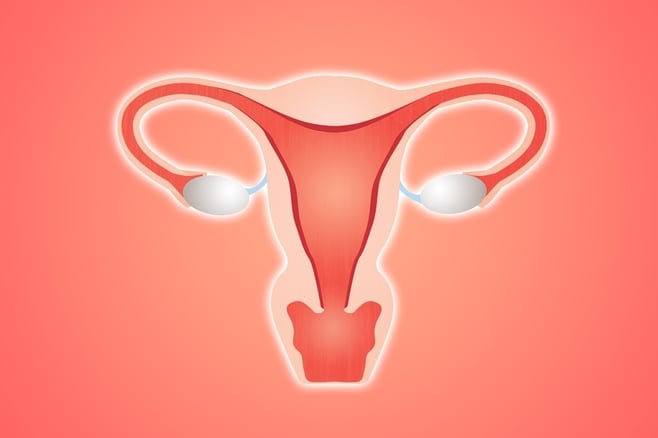
In vitro fertilization (IVF) is a highly effective treatment for many causes of infertility. This is especially true for patients dealing with tubal-factor infertility, where a blockage or other problem with the fallopian tubes (which carry eggs from the ovaries to the uterus) makes conceiving naturally difficult or impossible. Tubal-factor infertility may be caused by a number of conditions, including hydrosalpinx, which is a buildup of fluid in the fallopian tubes. IVF can help patients with hydrosalpinx, but there are some issues to consider as you and your doctor plan your treatment approach.
What is hydrosalpinx and what causes this condition?
Hydrosalpinx is a disorder of the fallopian tubes. In a case of hydrosalpinx, the tubes are blocked, and a watery clear liquid begins to collect in the tube, causing it to swell and become distended. Most commonly, the blockage seals off the end of the tube that is closest to the ovary (known as the fimbrial end,) but in some rare cases both ends may be sealed. One or both tubes may be affected. It is a relatively common reason for infertility, and can be caused by many different conditions, including:
- A previous pelvic infection, such as chlamydia, gonorrhea, or pelvic inflammatory disease (PID).
- Endometriosis
- Adhesions, scarring, or inflammation from previous abdominal surgery
- Tumors (rarely)
How does hydrosalpinx impact fertility?
The presence of hydrosalpinx can impede fertility in several ways. On a simple biomechanical level, when a tube is blocked by fluid and swelling, the egg cannot travel through and sperm are unable to move normally to meet the egg for fertilization. Even if only one tube is affected, the tubal fluid from that tube may accumulate in the uterus and prevent implantation of embryos or be toxic to the embryo.
While IVF bypasses the fallopian tubes entirely and places an embryo right into the uterus, the chances of a successful IVF cycle in women with untreated hydrosalpinx are not encouraging. Patients with untreated hydrosalpinx who undergo IVF have less than half the rate of pregnancy of IVF patients who do not have hydrosalpinx. They also suffer more miscarriages. This may be caused by several factors:
- The hydrosalpinx fluid is toxic. This means that even with IVF, the presence of hydrosalpinx may harm the health of the embryo.
- The fluid may interfere with the lining of the uterus, making it less receptive to an implanting embryo.
- The trickle of fluid into the uterus may mechanically wash out transferred embryos.
How is hydrosalpinx diagnosed?
Patients with hydrosalpinx rarely experience any symptoms until they are attempting to conceive, though some do report pelvic pain. On its own, hydrosalpinx is not considered dangerous, but it can present a serious obstacle to getting pregnant. For many women, infertility is the only symptom, and the hydrosalpinx is discovered as part of a thorough investigation of their reproductive health.
Depending on the size of the swelling, hydrosalpinx can sometimes be diagnosed during a transvaginal ultrasound. It can also be seen during laparoscopic surgery, but the best way to diagnose the problem is with an HSG (hysterosalpingogram). HSG is a kind of fluoroscopy: an x-ray which uses a radio-opaque contrast dye to show the outline of the fallopian tubes.
The HSG is done as an outpatient procedure, and usually takes less than half an hour. During the procedure, a very thin catheter is inserted into the cervix, and the dye is gently injected. Images are captured as the dye moves through the uterus and fallopian tubes, allowing the doctor to see any blockages. Hydrosalpinx will show up clearly on an HSG.
What are the treatments available for hydrosalpinx?
There are several approaches to treating hydrosalpinx. In some cases, surgeons may attempt to repair the tubes by opening up the sealed end with a procedure known as a salpingostomy, or they may try to stop the leakage of fluid into the uterus by blocking the tube with an Essure device. The fertility experts at SCRC prefer to remove the tube entirely through minimally invasive laparoscopic surgery. The procedure, known as salpingectomy, is performed under general anesthesia, and is usually completed in under an hour. Removing the affected tube completely offers a permanent correction of the problem, and often increases IVF success rates drastically. Recovery from the surgery usually takes about three weeks.
Is IVF the right treatment for me?
If you’ve been diagnosed with hydrosalpinx, the first step is to treat the condition before attempting pregnancy. When the hydrosalpinx has been removed, IVF is very good for most patients. Once you have recovered from surgery, you can begin an IVF cycle. With the hydrosalpinx gone, your chances of success should be much better.
Hydrosalpinx is a common, easily treated problem which illustrates how important it is to get a thorough diagnosis before you begin infertility treatment. Understanding the specific causes of your infertility and treating a problem like hydrosalpinx before undergoing IVF can prevent failed cycles and unnecessary distress.
If you suspect you may be suffering from hydrosalpinx, don’t hesitate to ask your doctor about diagnosis and treatment. If you’d like to set up a consultation with one of our Los Angeles IVF fertility specialists , give us a call today. We’d be happy to answer your questions and help you explore your treatment options.
Share this on social media:





